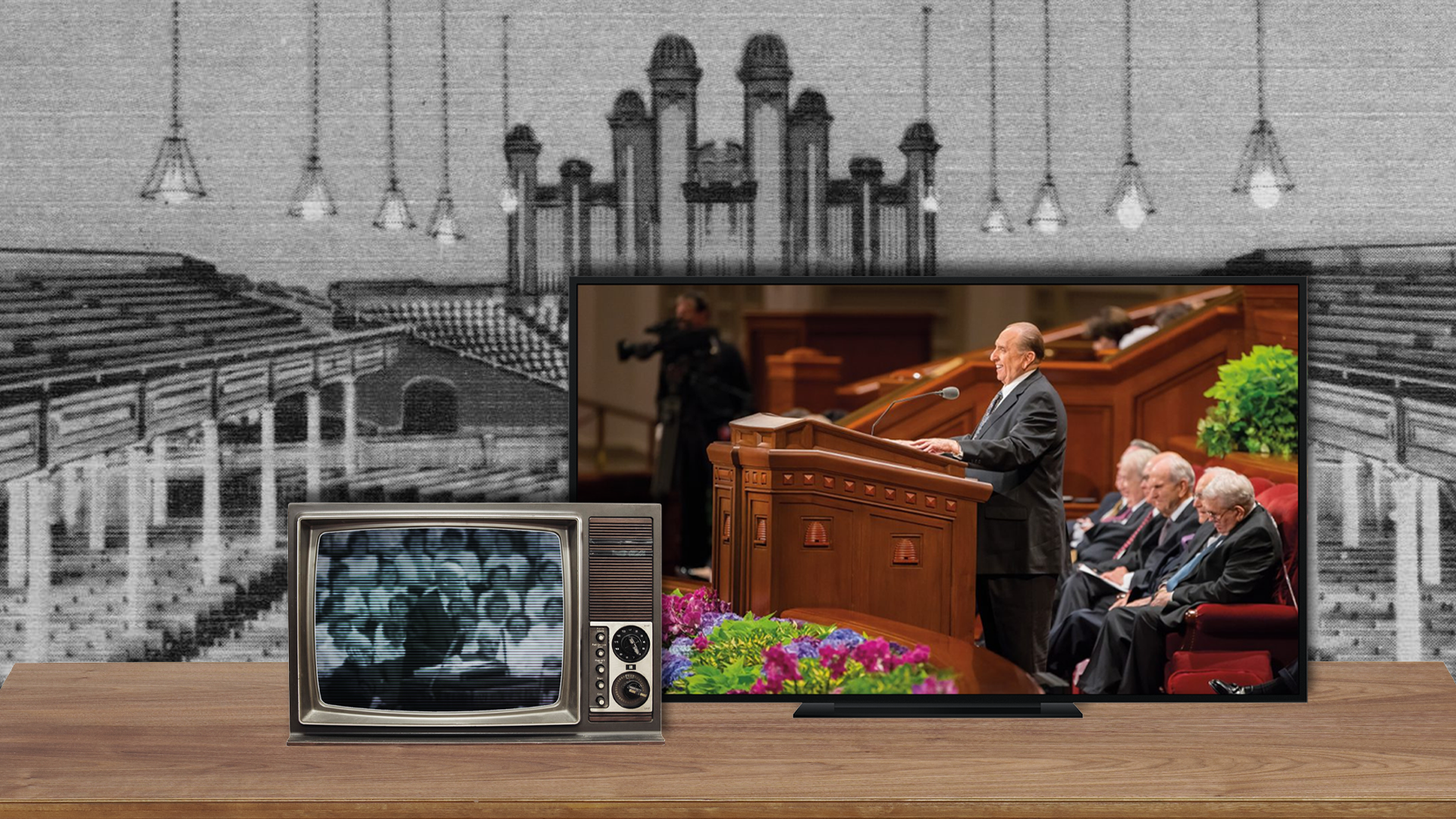The October 2025 General Conference was historic—the first time in nearly 75 years that the Quorum of the Twelve presided. It was also notable because, for the first time in eight years, no new temples were announced.
But did you know that in the early days of the Church, General Conference wasn’t standardized at all? In 1834 there was only one conference, but the very next year there were four! The “General Conference of the Church” in the 1830s would hardly be recognizable to most members today.
Here’s a short history of where General Conference came from, how it became standardized, and a few surprising facts along the way.
General Conference in the Early Church
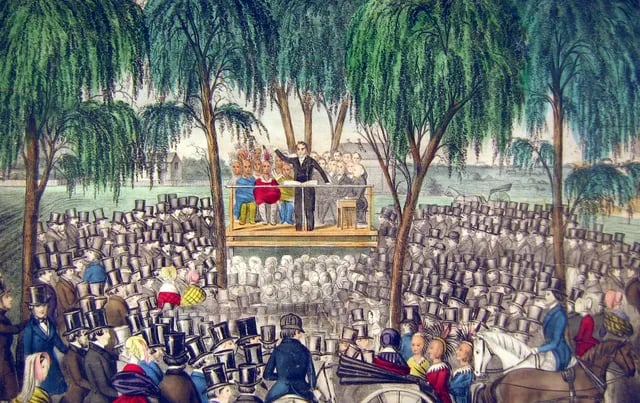
When the Church was organized in 1830, Joseph Smith received direction that conferences be held every three months—or “from time to time” as needed. The first General Conference took place that June, just two months after the Church’s organization. At that meeting, a book of revelations was approved and several members were ordained elders. Only approximately 30 members were present.
In the years that followed, conferences were called as needed. Some years had only one; others had several. In 1840, the Church established a semiannual schedule—one conference in April around the anniversary of the Church’s founding, and another in the fall. That pattern became the foundation of the modern tradition.
Early conferences were largely administrative. At the January 1832 conference, for instance, Joseph Smith was sustained as President of the High Priesthood, and missionary assignments were made. The May 1834 conference was notable because the attendees voted to change the Church’s official name from The Church of Christ to The Church of the Latter Day Saints.
The April 1844 conference was historic for many reasons. It was the last conference Joseph Smith presided over, but it was also the first to focus primarily on teaching rather than business. During that meeting, the Prophet delivered his famous King Follett Discourse—marking a turning point in the purpose of General Conference.
General Conference in 19th Century Utah
Semiannual General Conferences continued under Brigham Young, with a one-year break in 1846 as the Saints left Nauvoo. The first conference in Utah was held in 1848 at the Salt Lake Bowery.
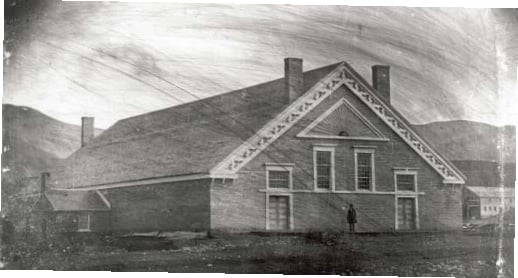
In 1852, the Saints completed the Old Salt Lake Tabernacle, which seated about 2,500 and hosted General Conference for 15 years. In 1867, the new Salt Lake Tabernacle, opened, built on plans that envisioned seating for more than 12,000. Some later sources list its capacity as about 8,000 (including gallery and choir). 21st century renovations, which include more leg room, have dropped capacity down to around 3,500.
Although the Tabernacle became synonymous with General Conference, it wasn’t always the venue. Between 1877 and 1887, sessions were also held in Logan, Provo, Coalville, and St. George.
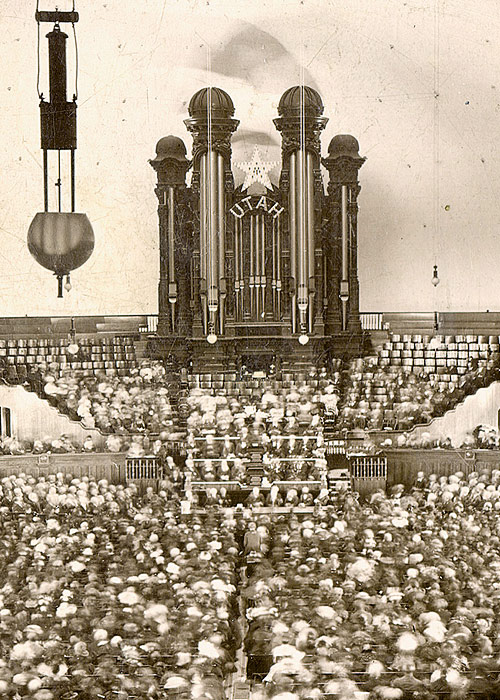
During this period, October conference was sometimes moved to September so missionaries could depart before winter storms. April conference, however, was always held on or near April 6—the Church’s founding date. While teaching had become the primary purpose of General Conference, conferences still included important business such as policy announcements, mission calls, and administrative decisions.
General Conference in the 20th Century
By the 1900s, General Conference had settled into a consistent rhythm—but not without a few notable exceptions:
April 1919: Postponed until June due to the influenza pandemic. President Heber J. Grant was sustained in a solemn assembly at that conference.
April 1942: Closed to the public because of World War II. Attendance was limited to General Authorities and local priesthood leaders, with most sessions broadcast by radio. A special testimony meeting was even held on the fifth floor of the Salt Lake Temple.
October 1957: The only General Conference ever fully canceled (other than during the 1846 exodus from Nauvoo), due to concerns over the Asian flu epidemic.
The Standardization and Globalization of General Conference
The arrival of radio, television, and later satellite broadcast expanded General Conference’s reach far beyond Utah. As the Church grew internationally—by the mid-1990s, more members lived outside the United States than within—global access became essential.
The need for standardization in a growing Church also reshaped the format. In 1977, conference shifted from six sessions over three days to five sessions over two. The dates were standardized to the first weekends in April and October rather than always including April 6.
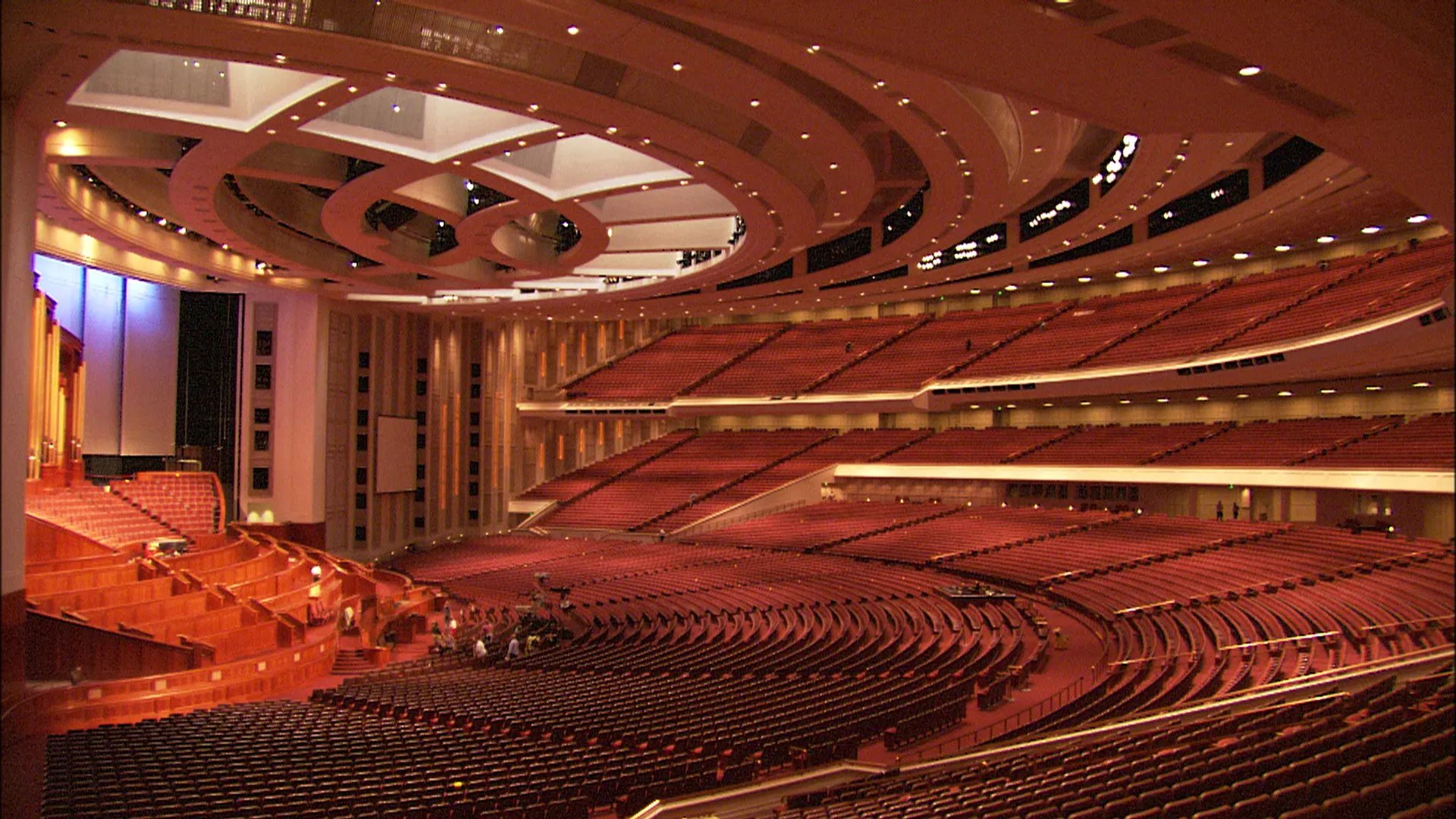
Also needed was a larger venue. Completed in 2000, the Conference Center seats over 21,000 people. Since 2000, all sessions except those in 2020 have been held in the Conference Center. During the COVID-19 pandemic, the April and October 2020 General Conferences were held without public attendance in a small auditorium at Church headquarters rather than the Conference Center, and only those speaking were invited to attend.
Today, General Conference means sustainings, talks, and temple announcements—but it also carries a shared culture and rhythm all its own. For many members of the Church, that means pajamas until noon, cinnamon rolls on Saturday morning, caramel popcorn from ministering sisters/brothers, and dinner or ice cream with family after the final session.
For Saints outside of the United States, it can mean waking up at early hours, watching with their ward at a church building, or hearing the talks through translation—in over 80 languages live, and even more in post-conference translations.
General Conference has grown from a small meeting of a few dozen people in 1830 into a worldwide gathering of millions. It unites Latter-day Saints across nations, languages, and time zones in a single purpose: to hear the voice of the Lord through His prophets and apostles. Like Mormonr? Sign up for our newsletter to receive updates on the latest blog posts, Q&As, and Mormonr projects.


